Features of watering radishes
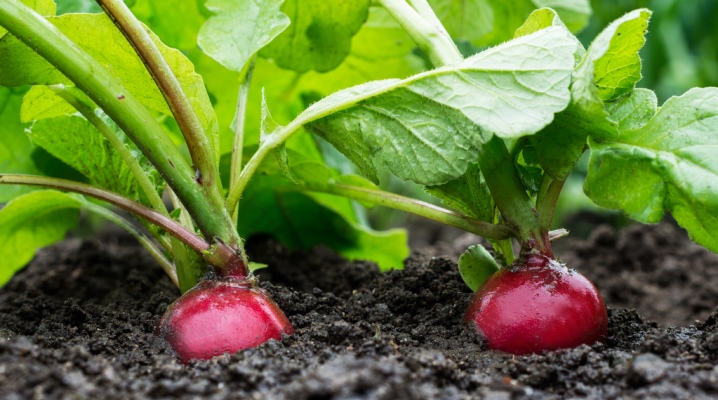
Radish is a very tasty crop that is also easy to grow. You can grow this vegetable both outdoors and in a greenhouse. The main point that will have to be taken into account in any case is the regularity of watering. How to implement them, we will consider in the article.
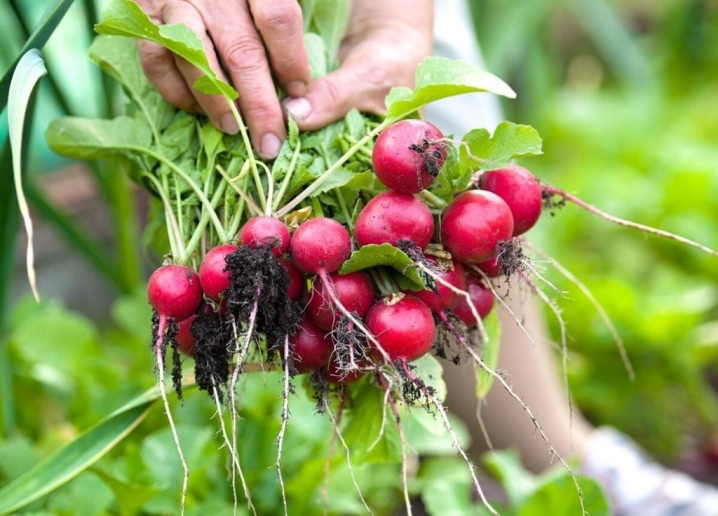
How often should you water?
It should be noted right away that radish is a very moisture-loving crop. Without timely watering, the plant quickly withers, and the resulting roots will be small, deformed and not too juicy and crunchy. The crop needs a regular supply of liquid, and the frequency of watering will depend on the growing conditions of the radish.
- In a house or apartment. Radish is unpretentious, and some even grow it at home. For this, small long trough-type containers are used. The container with radishes should be on the sunniest windowsill, so the earth will dry quickly. You need to water it at the moment when the top lump becomes completely dry. This happens approximately every 2 days. If the radish is in the seedling stage and is covered with a film, it will need to be removed daily by spraying the soil from a spray bottle. Grown up seedlings are watered from a shallow watering can every couple of days.
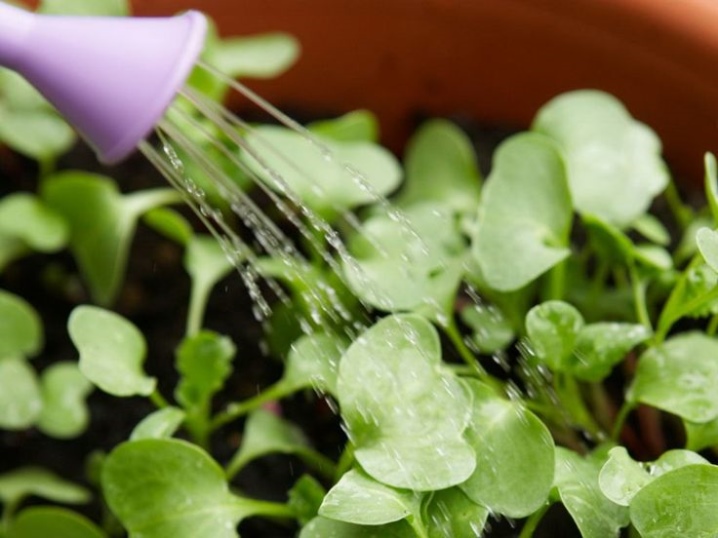
- Outdoors. Outdoor radishes are also watered every two days. However, it should be borne in mind that during periods of extreme heat and drought, the frequency of watering will have to be increased. In most cases, gardeners water the crop once a day, but sometimes they have to do it twice, especially if the heat is combined with strong winds.

- In the greenhouse. Crops grown in greenhouse conditions are watered when the soil becomes dry. If the weather is cool, the liquid is supplied every 2-3 days. In the heat, the frequency of watering is increased to once a day.
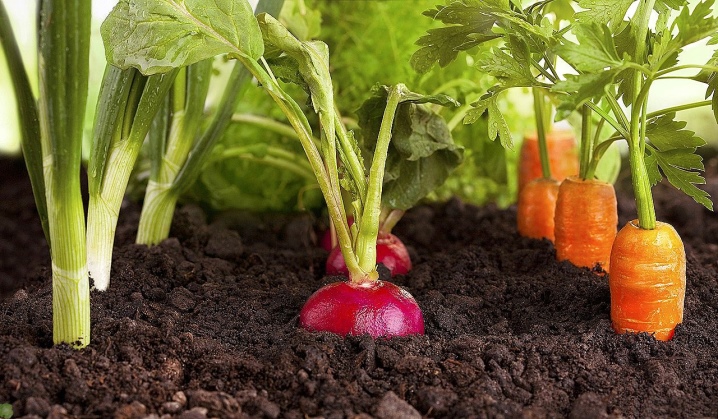
Another point worth noting is watering after planting. Once the seedlings have been placed in their permanent home, they are immediately spilled with water.
As for the last watering, then it is carried out 8 hours before harvest. This will hydrate the roots, making them crisper and more delicious.
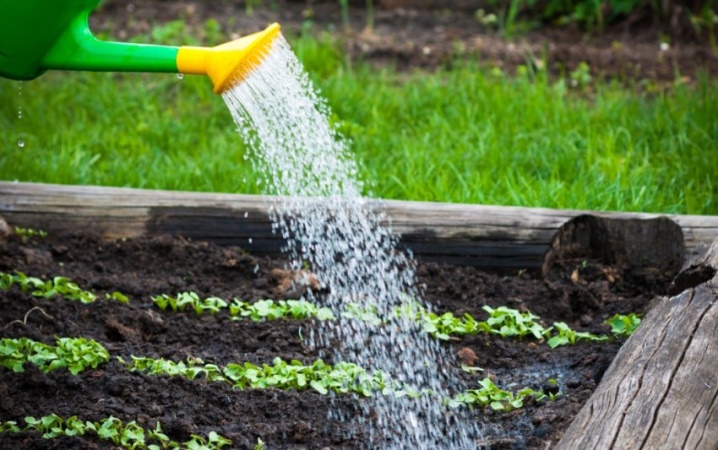
Water temperature and volume
Radish loves heat very much, so it is not recommended to pour cold water on it. You should use a warm or room temperature liquid, previously settled. The best option is to put a bucket of water in direct sunlight for several hours. The heated water will keep the roots warm overnight. However, if there is unbearable heat on the street, and the nights are not cool, then it is permissible to use cold liquid, there will be no harm from this.

For 1 square meter of irrigated area, approximately 10-15 liters of liquid will be required... In addition, it is necessary to pay attention to the composition of the soil itself. Chernozem, which slowly absorbs water, should receive no more than 10 liters per 1 m2. He will retain this liquid in himself for a long time. Light and sandy soils will require 15 liters as they quickly evaporate the supplied moisture.
How to water properly?
By irrigating radishes incorrectly, you can achieve a poor harvest containing bitter, misshapen, small roots.... Moreover, they will be such both with a shortage and with an excess of moisture. This is why the first step is to determine the moisture content of the soil. Before watering, check the soil by clenching it in a fist and then releasing it. The ground should be cool, form into a lump, and when dropped, disintegrate into small pieces.There can be no dust. If the characteristics are the same, it's time to water the radish.
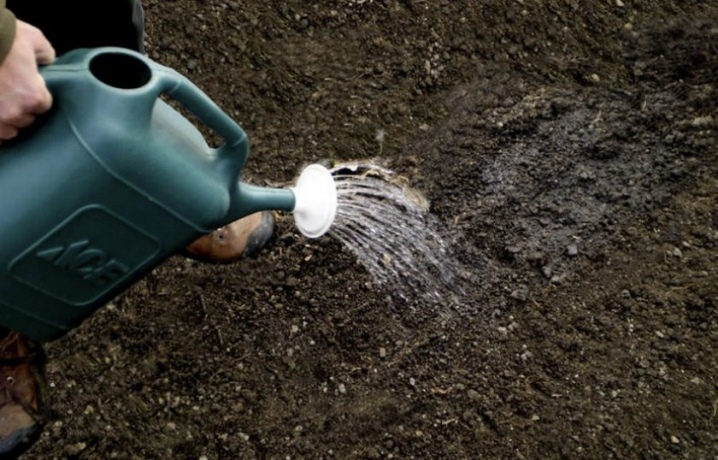
Once the crop is planted, the watering depth should be at least 10 centimeters. As the radish grows, the depth increases, bringing it to 15 centimeters.
To be sure, check the information on the seed bag before planting. The length of the root should be indicated there. Be guided by it.
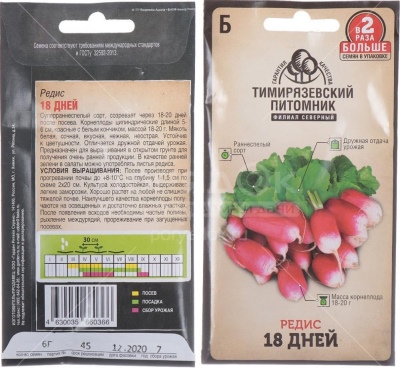
Radish is poured from a watering can with a nozzle, you can also use a hose, but there must be a spray on it. If it is not there, the jet will wash out the soil, exposing the roots. After that, they will begin to dry, grow small. In hot and sunny weather, the radishes should be watered early in the morning or after sunset. Otherwise, the soil will dry out too quickly, and the plants will get leaf burns.
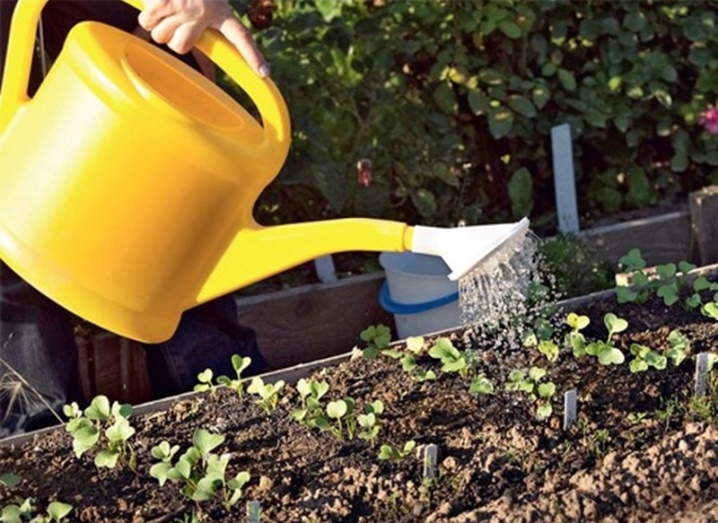
Watering radish can be successfully combined with its feeding. These are fertilizers that dissolve in water. They allow the culture to grow even faster.
- For example, it is not uncommon for the green mass to be splendid, and the roots themselves are small and not particularly tasty. This means that the soil lacks potassium and phosphorus. To solve the problem, 40 grams of superphosphate, 20 grams of potassium sulfate and 250 grams of wood ash are stirred in a 10-liter bucket of water. Plants are spilled under the root, from a watering can.
- The pale foliage of the radish indicates a lack of nitrogen.... A teaspoon of nitrogen fertilization is dissolved in 10 liters, and then the soil is watered with the composition.
It is important to remember that watering combined with dressing replaces the main ones - you should not water the plants twice.
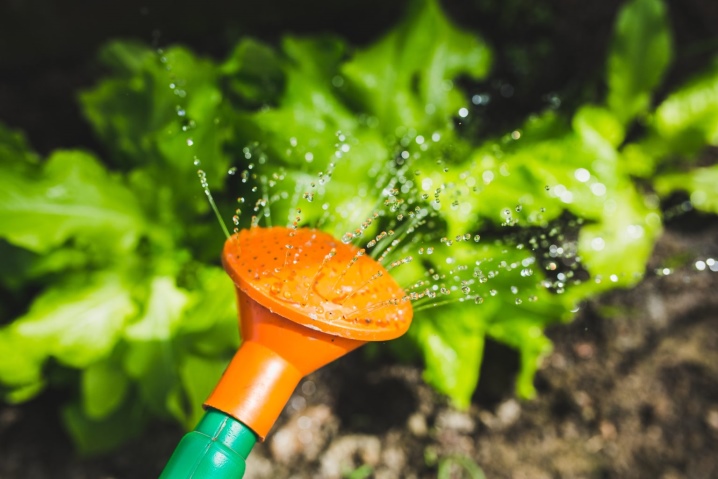
Useful Tips
Consider a few effective recommendations shared by experienced gardeners.
- After watering the garden, you must loosen, to provide oxygen access. It is important to weed out in a timely manner the weeds that take moisture from the radish.
- This culture can from time to time pour nettle infusion: this will increase the growth rate and characteristics of the fruit. The finely chopped plant is put in a bucket, half full, and then left for 14 days.
The finished mixture is diluted with water in a ratio of 1: 10 and poured over the soil.
- If the plants are grown in a greenhouse, then it should contain equipped with ventilation... Otherwise, it will be necessary to ventilate the greenhouse after each watering, otherwise excessive humidity will lead to the formation of a black leg.
- No matter how much a culture needs water, it cannot be overmoistened. If you pour radishes endlessly, the fruits will be cracked.
- It also happens that the gardener needs to leave the site for a couple of days. It is important to remember that with a lack of moisture, even within 3-4 hours, the crop will already suffer... Fortunately, this can be prevented. Water the culture abundantly and then mulch it. Mulch will keep moisture in the soil. The main thing is not to use this technique too often.
- Greenhouse radishes can be watered using artificial irrigation systems. These can be both manual and automatic options. After watering, the soil must be mulched with peat.
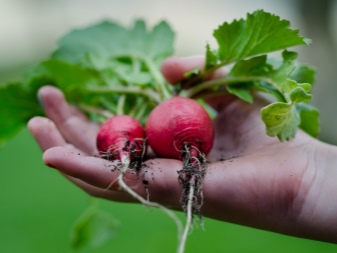
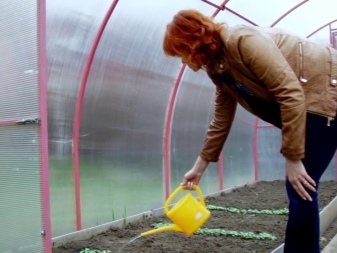
About other features of growing radishes in the video below.













The comment was sent successfully.